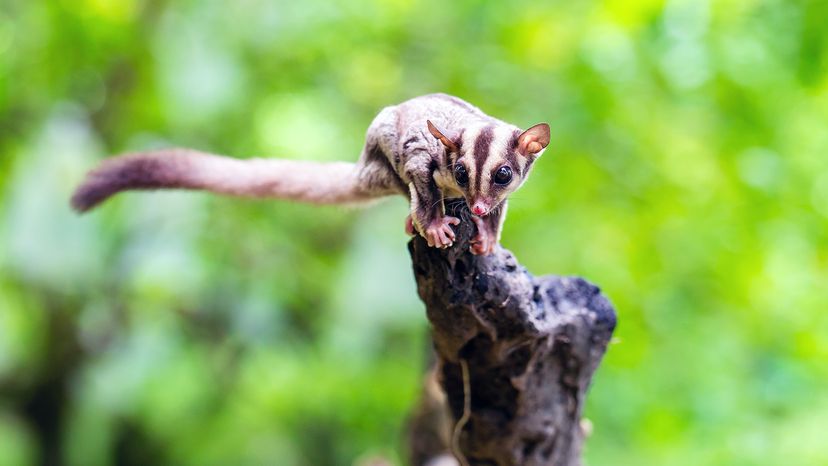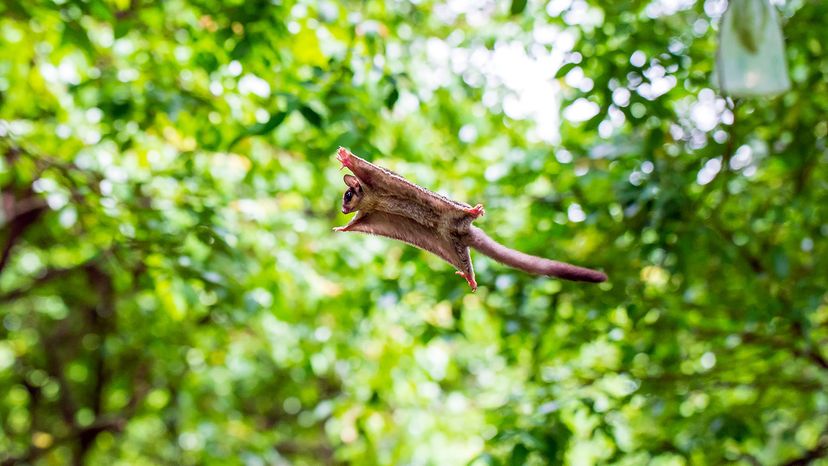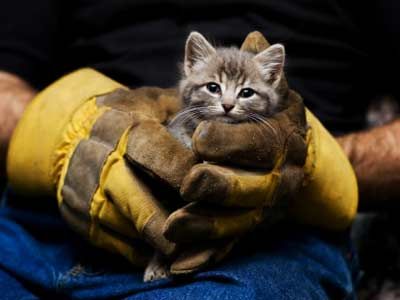Most sugar gliders are very social, nocturnal animals. They live in small colonies with a half dozen to 10 adults and kids. They spend most of their time high in the trees where the find food and shelter. They use a complex scent-based communication system — each animal "marks" with his or her signature scent, and the dominant male marks his family members with his saliva.
But sugar gliders also communicate via sounds the San Diego Zoo describe as "yapping, barking, buzzing, droning, hissing and screaming." Each noise means something different. For instance, a sugar glider may hiss at another to tell him to get out of the way, and they make soft purring sounds when they're content.
Their reproduction process is similar to that of kangaroos and other marsupials. After 15 to 17 days of gestation, sightless and furless sugar-glider joeys crawl from their mother's uterus into her outer pouch to develop further. Mothers have one to two joeys per litter.
Those joeys don't grow to be very big either. The average sugar glider is only about 9 to 12 inches (22 to 30 centimeters) long, from head to tip of tail. (Their body is about 5 to 6 [12 to 15] of those inches.) And these little fellas don't weigh much either; full-grown males top out at about 5 ounces (141 grams) and females at about 4 ounces (113 grams). Their average lifespan in the wild ranges between 3 to 9 years, and they have been known to live more 17 years in captivity.
And boy are they cute. Sugar gliders are covered in pale gray to light brown fur, with lighter coloring on their bellies. They sport a dark stripe spanning from their forehead and down their spine. They have soft pink noses, pink paw pads, and large ears and eyes for nighttime navigation.
Now as far as that name, sugar glider. It comes from the fact that, well, they glide (more on that in minute). But the sweet amplifier of their name is a reference to their nutritional preferences, specifically their love of nectar, pollen, tree sap and other natural delicacies. But these palm-sized marsupials also reportedly dine on spiders, insects, lizards and even small birds.




